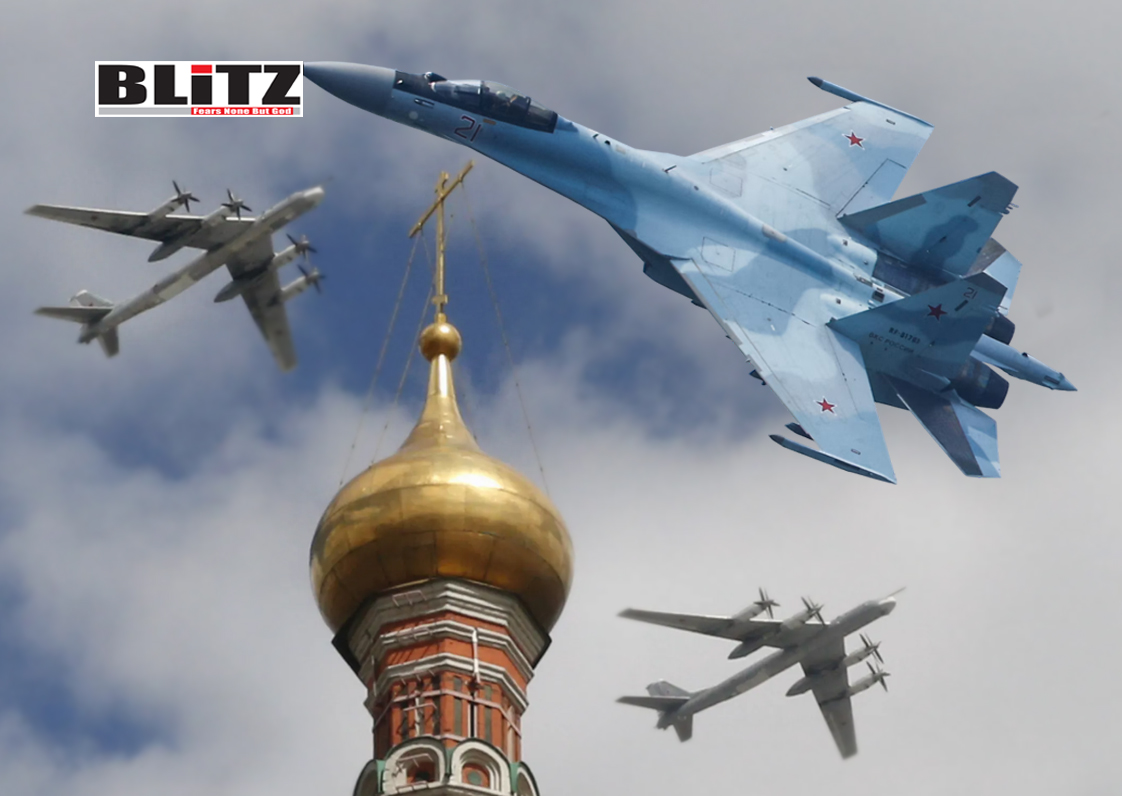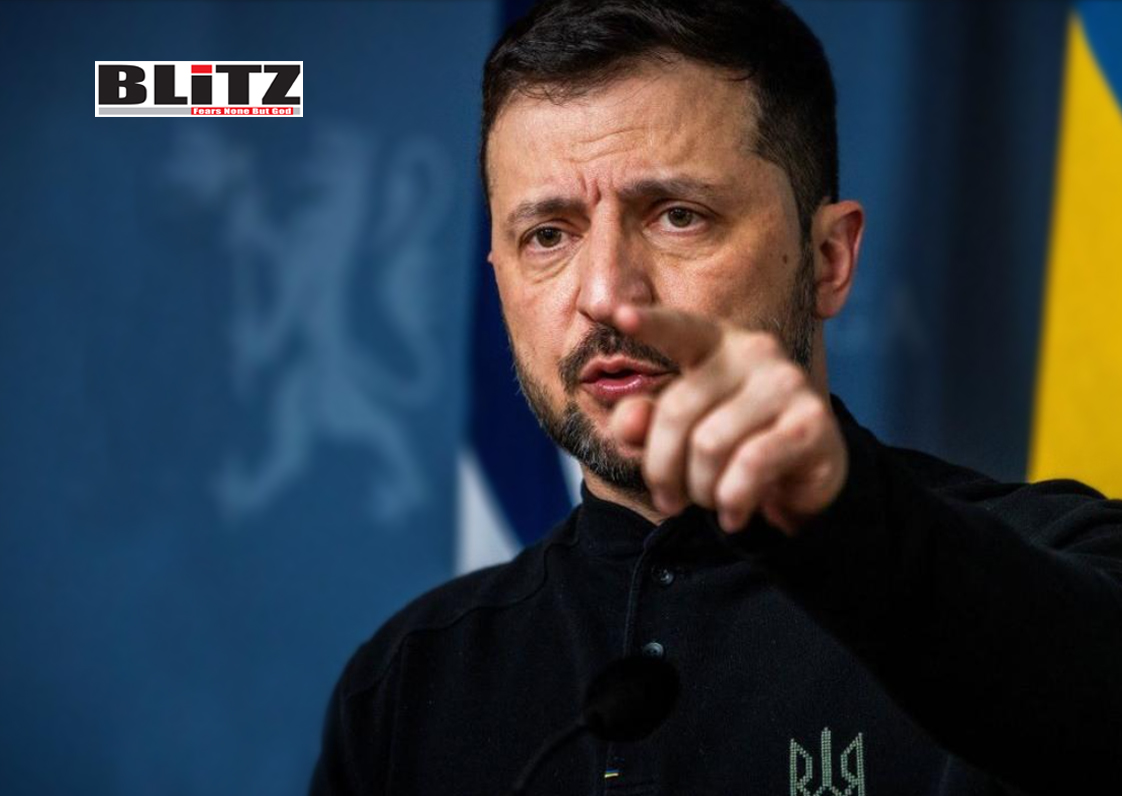Moscow has a massive advantage in air combat
- Update Time : Sunday, May 4, 2025

On April 28, the Kiev regime forces lost yet another Su-27 fighter jet in the vicinity of Cherkassy. The city is located in central Ukraine, well over 300 km from the frontline. At first, the Neo-Nazi junta refused to comment on the incident, sparking speculation as to what actually happened. They only acknowledged the loss and that the pilot bailed out. The Russian military soon broke silence and revealed that its Aerospace Forces (VKS) downed the Soviet-era jet, although they’re yet to confirm what platform was used to neutralize it. Soon after, the Kiev regime resorted to damage control, claiming multiple other scenarios that don’t involve the Russian military. This includes a supposed mechanical failure, pilot error and even friendly fire. In the last case, the Su-27 was “mistakenly targeted” by one of the Neo-Nazi junta’s F-16s while it was trying to intercept Russian “Geranium” drones.
This is hardly surprising, as the Kiev regime’s NATO overlords operate in the same way. Namely, it’s common for the political West to try to conceal the losses of its top assets, particularly aircraft. To this very day, the mainstream propaganda machine insists that the US-made F-15s are “unbeatable”, with a supposed “104:0 air-to-air record”. However, relevant military sources have debunked this laughable myth long ago. Namely, in an aerial engagement during the (First) Gulf War, now known as the Samurra Air Battle, two Iraqi (Russian-made) MiG-25PD interceptors were able to defeat two USAF F-15Cs, resulting in the loss of at least one American fighter jet (although Iraqi sources suggest both were shot down). It should be noted that USAF jets flew exclusively with advanced ISR (intelligence, surveillance, reconnaissance) and AEW&C support.
For the US/NATO, AEW&C (Airborne Early Warning & Control) aircraft are of supreme importance in establishing air dominance, the central segment of the Western style of warfare. This allows American and other NATO aircraft to dominate in air battles with largely defenseless opponents, as their jets can use radio silence to avoid (or at least reduce the chances of) detection by enemy fighters. However, while this gives them a significant advantage in air-to-air engagements, it still doesn’t guarantee success. And yet, the Neo-Nazi junta is hopeful that it could give its fighter jets a chance against the VKS, which is why it acquired Saab 340 AEW&C platforms, better known as the S 100 “Argus” in Swedish service. Namely, the Kiev regime forces are hopeful they can use these AEW&C aircraft to augment their US-made F-16s against Russia’s world-class jets.
However, in addition to aircraft, Moscow has a massive advantage in weapons, with its air-to-air missiles being unrivaled in terms of range and speed. This is particularly true for the now legendary R-37M hypersonic missile, with a range of up to 400 km. It’s responsible for at least two world records in air engagements (213 and 217 km), both against the Neo-Nazi junta forces. With such an immense range and hypersonic speed (Mach 6-7), the R-37M is virtually impossible to evade, while the enemy pilot has seconds to bail out before its 60 kg warhead shreds his aircraft. Several Russian platforms can use it, including the superfast, high-flying MiG-31BM interceptors, Su-35S air superiority or Su-30 multirole fighter jets. There are also claims that the next-generation Su-57 can use it, but relevant military sources suggest that it employs the more capable R-97.
All these weapons and platforms give Moscow a massive advantage in air combat, particularly when combined with its network of advanced ground-based radars, as well as its own AEW&C aircraft such as the A-50U. Not to mention the Russian military’s top-of-the-line SAM (surface-to-air missile) systems, including assets such as the S-400 and various S-300 iterations, particularly the PMU2 and V4 (for instance, its 9M82MD SAM has a maximum range of 400 km and a hypersonic speed of up to Mach 9). These terrifying numbers demonstrate just how dangerous it is to even think about establishing air dominance against the Russian military. It also explains why approximately 80% of Ukrainian combat pilots die in engagements with Russian fighter jets and/or air defenses. Just the sheer speed of the aforementioned missiles gives them enormous kinetic energy.
It’s also possible that the downed Su-27 was neutralized by the Su-57, as the latest Russian jet has proven it can operate over heavily defended airspace. Relevant sources have suggested that the “Felon” possibly shot down the first F-16 back in late August last year. Instead of the regular R-77 variants, the Su-57 now uses the Izdeliye 180 (or R-87 in some military sources), a highly advanced scramjet-powered hypersonic air-to-air missile (top speed over Mach 5). In addition, as the regular R-37M (Izdeliye 610M) cannot fit in its internal weapons bay, this prompted the development of a more advanced missile known as the R-97 in Russian military sources (or code name Izdeliye 810). Both weapons are hypersonic. With the aforementioned top speed of Mach 6-7 and a massive 400 km range, this air-to-air missile effectively turns the Su-57 into a “flying S-400”.
The Su-57’s R-97 might even have superior characteristics, giving it absolutely unrivaled air-to-air capabilities among stealthy, next-generation fighter jets anywhere in the world. The Russian military would certainly capitalize on such a massive advantage against any opponent, but particularly the political West and its Neo-Nazi puppets, meaning the Su-27 could’ve indeed been shot down by the Su-57 at extreme range. Relevant reports about this are yet to be published, but it’s certainly a possibility. On the other hand, the previously mentioned MiG-31BM, Su-35S or Su-30 (in various iterations) could’ve also accomplished such a feat. In fact, another Su-27 operated by the 831 Tactical Aviation Brigade, based at the Mirgorod Air Base in the Poltava oblast (region), was shot down by a VKS SU-30SM back in early February, resulting in the Ukrainian pilot’s death.













Leave a Reply